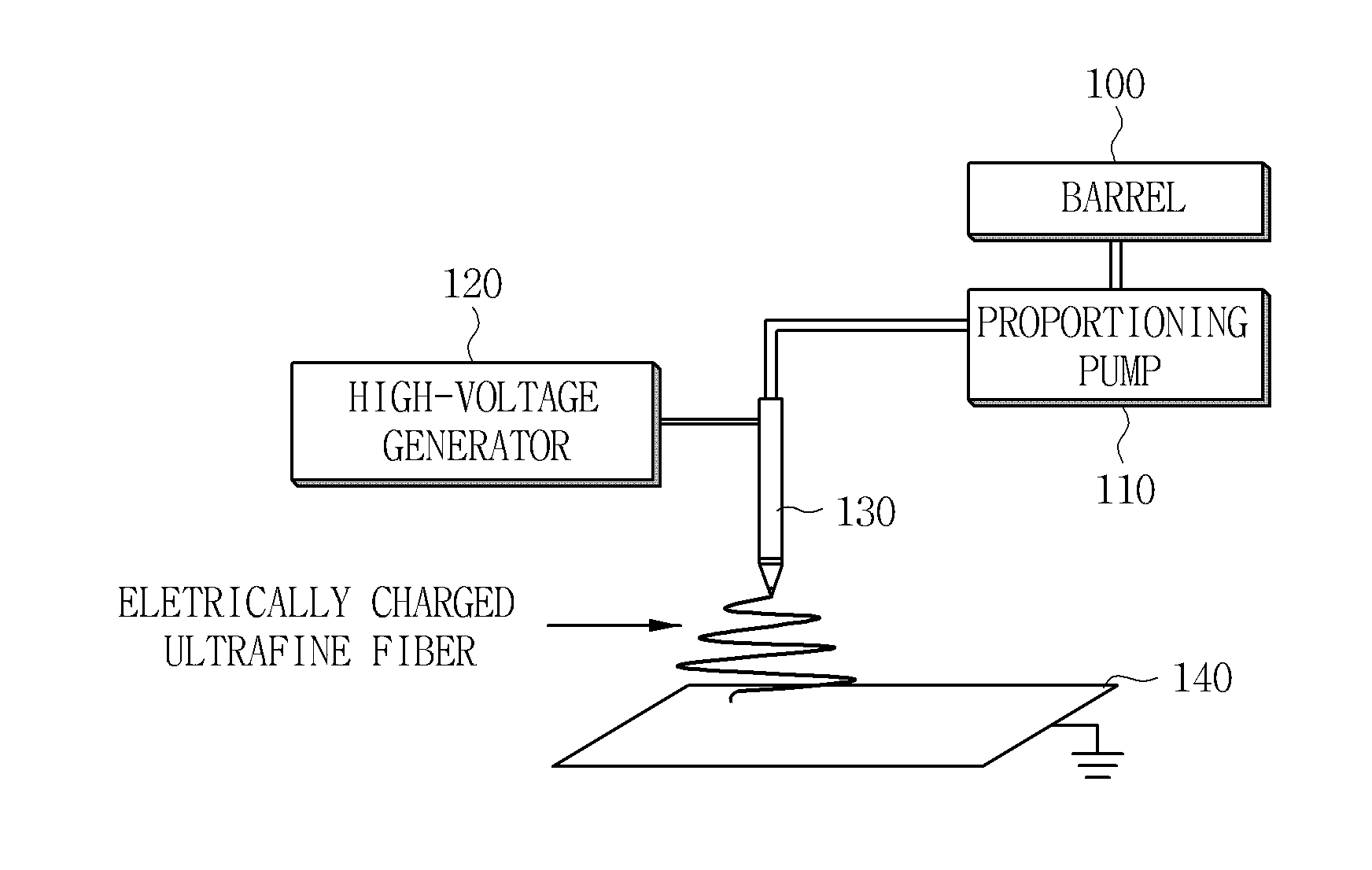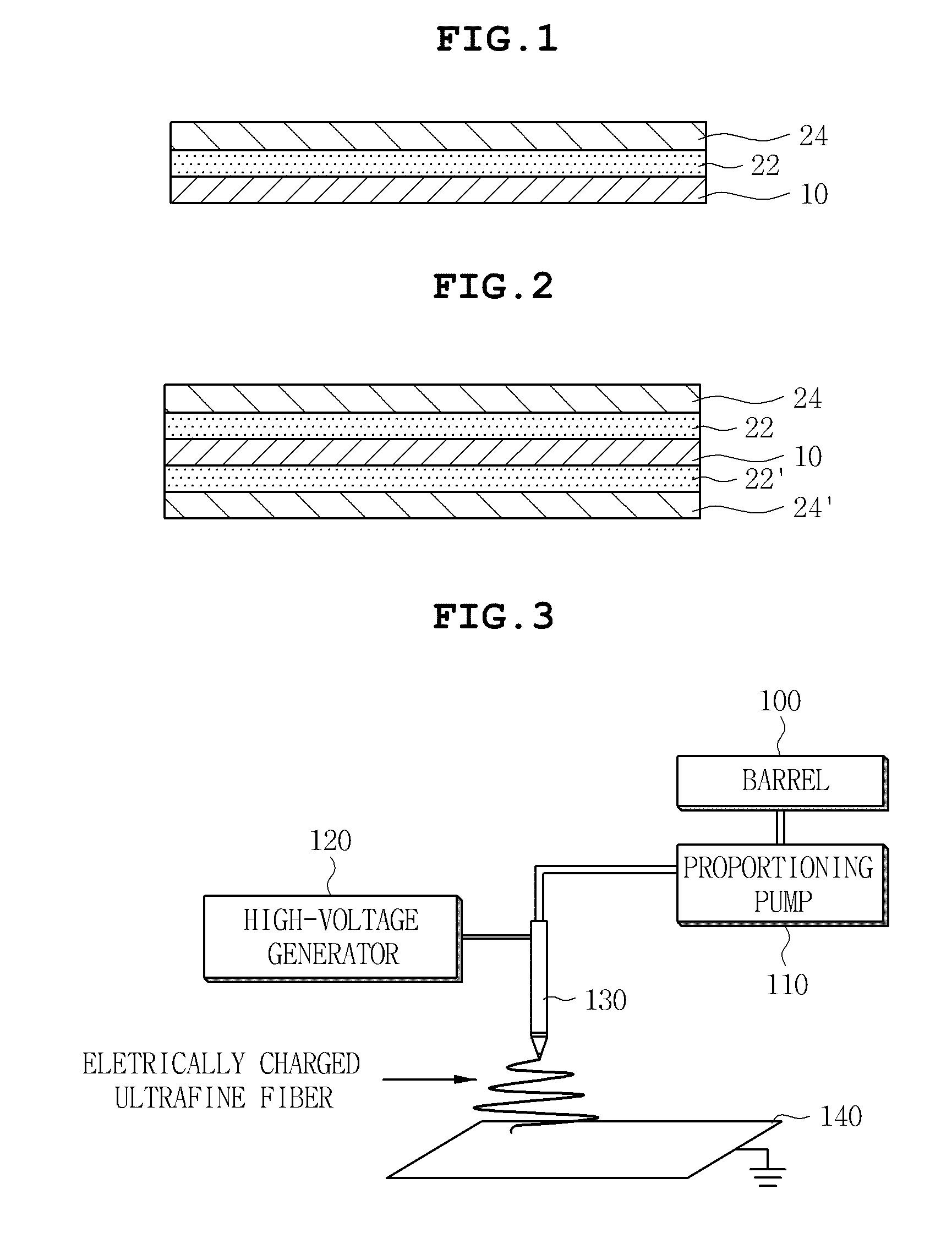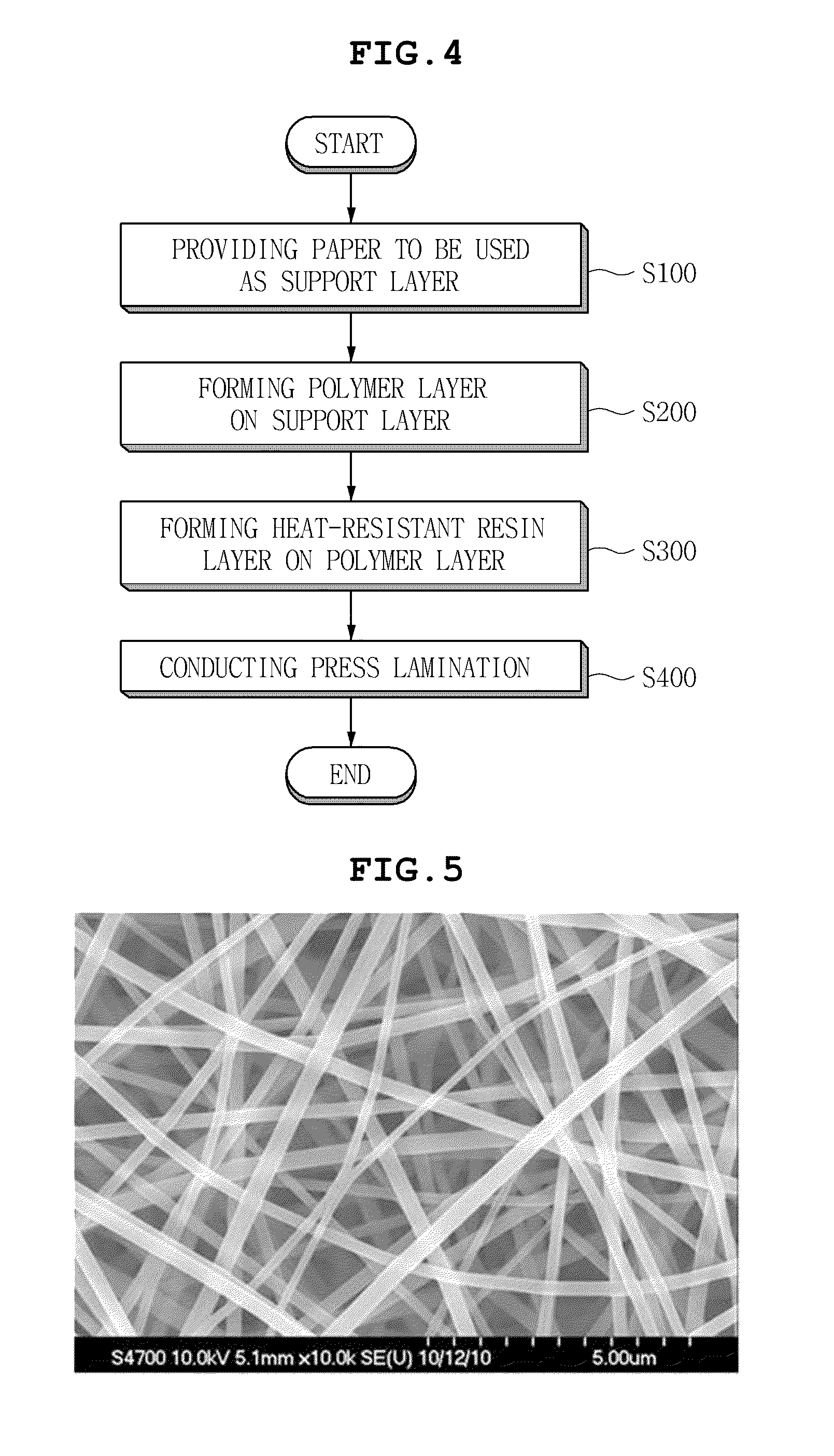Fibrous separation membrane for secondary battery and manufacturing method thereof
a separation membrane and secondary battery technology, applied in the direction of secondary cell details, cell components, cell component details, etc., can solve the problems of high manufacturing cost, low manufacturing cost, and inability to freely select raw materials of separation membranes, and achieve the effect of expanding the range of raw material selection and high strength
- Summary
- Abstract
- Description
- Claims
- Application Information
AI Technical Summary
Benefits of technology
Problems solved by technology
Method used
Image
Examples
first embodiment
[0041]FIG. 1 is a sectional view showing a fibrous separation membrane for secondary batteries according to the present invention.
[0042]As shown in FIG. 1, the fibrous separation membrane for secondary batteries according to the first embodiment of the present invention includes a support layer 10, a polymer layer 22 applied on the support layer 10, and a heat-resistant resin layer 24 applied on the polymer layer 22. Here, if necessary, the polymer layer 22 may not be provided.
[0043]The support layer 10, which serves to provide strength to the polymer layer 22 and the heat-resistance resin layer 24, is made of cellulose fiber, and has a weight of 5˜500 g / m2, preferably 100-300 g / m2.
[0044]Meanwhile, the support layer 10 may be formed of paper, and the paper may be transparent or translucent. In particular, the paper for forming the support layer 10 may be tracing paper. The “tracing paper” is referred to as paper certified according to ISO 4046-1978, 6.94.
[0045]Particularly, the trac...
second embodiment
[0064]FIG. 2 is a sectional view showing a fibrous separation membrane for secondary batteries according to the present invention.
[0065]As shown in FIG. 2, the fibrous separation membrane for secondary batteries according to the second embodiment of the present invention includes a support layer 10, a pair of polymer layers 22 and 22′ applied on both sides of the support layer 10, and a pair of heat-resistant resin layers 24 and 24′ respectively applied on the polymer layers 22 and 22′. Here, if necessary, the polymer layers 22 and 22′ may not be provided.
[0066]The configuration of the fibrous separation membrane for secondary batteries according to the second embodiment of the present invention is the same as that of the fibrous separation membrane for secondary batteries according to the first embodiment of the present invention, except that the polymer layers 22 and 22′ and the heat-resistant resin layers 24 and 24′ are sequentially formed on both sides of the support layer 10. T...
PUM
| Property | Measurement | Unit |
|---|---|---|
| melting point | aaaaa | aaaaa |
| melt index | aaaaa | aaaaa |
| melting point | aaaaa | aaaaa |
Abstract
Description
Claims
Application Information
 Login to View More
Login to View More - R&D
- Intellectual Property
- Life Sciences
- Materials
- Tech Scout
- Unparalleled Data Quality
- Higher Quality Content
- 60% Fewer Hallucinations
Browse by: Latest US Patents, China's latest patents, Technical Efficacy Thesaurus, Application Domain, Technology Topic, Popular Technical Reports.
© 2025 PatSnap. All rights reserved.Legal|Privacy policy|Modern Slavery Act Transparency Statement|Sitemap|About US| Contact US: help@patsnap.com



